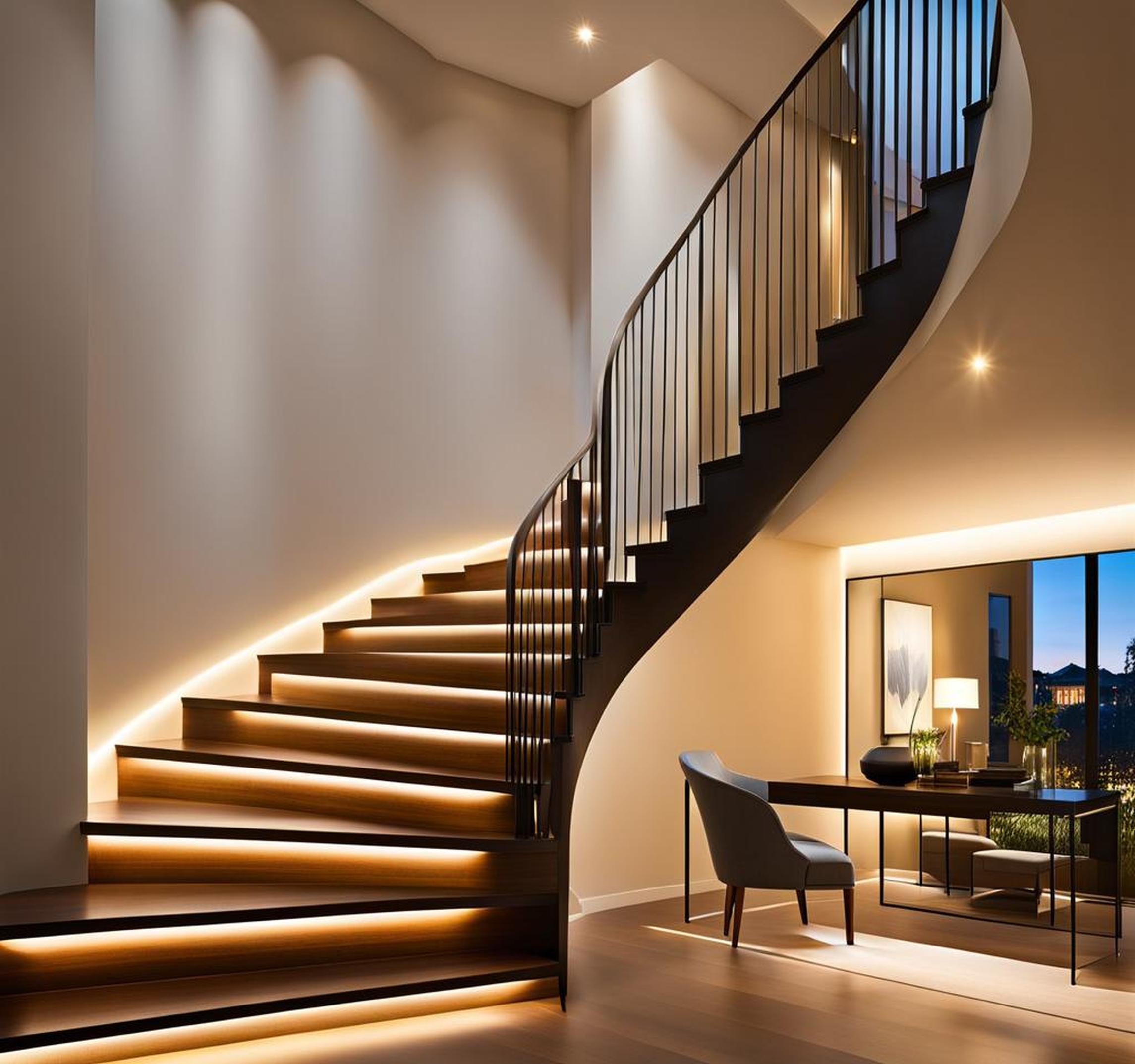Proper lighting is essential for any well-designed home, but often overlooked areas like staircases and landings present unique challenges. The right lighting layout can transform these spaces from dark passageways into beautiful architectural features. This comprehensive guide will walk you through lighting options to make your stairs and landings safer, more functional, and visually striking.
We’ll cover everything from general lighting tips to creative decorative touches so you can highlight your staircases and landings perfectly.
Lighting Needs for Stairs vs. Landings
When lighting a staircase, the primary goals are visibility and safety. Stair lighting should allow users to see each step clearly at all times of day to prevent slips or falls. Positioning lighting to reduce glare and shadows is key.
Landings tend to serve as small transitional spaces or gathering areas. The lighting goals here are more about ambiance and illuminating any tasks that take place in the landing, like reading nooks or work desks. You’ll want a balance of general and task lighting.
Purpose of Stair Lighting
- Maximize visibility on steps
- Enhance safety by preventing slips/falls
- Reduce shadows and glare
Purpose of Landing Lighting
- Create ambiance or focal point
- Illuminate tasks and activities
- Provide general illumination
General Lighting Tips for Stairs
For stairs, brightness is key for safety. Recessed lighting is ideal for staircases with low ceilings, as it won’t obstruct head space. Pendant lights can add visual interest if thoughtfully placed to avoid bumping into them. For grand staircase spaces, a statement chandelier can make a striking focal point.
Key Stair Lighting Guidelines
- Prioritize bright, even lighting for safety.
- Use recessed fixtures for low ceiling height.
- Add pendants carefully to avoid hitting bulbs.
- Try a chandelier as a centerpiece in large spaces.
General Lighting Tips for Landings
For landings, a layers approach combining ambient lighting with task lighting works well. Flush or semi-flush fixtures are recommended for tight spaces like hallways. Pendants can illuminate a small landing area beautifully. And don’t forget the opportunity to make a dramatic statement with a chandelier or pendant.

Key Landing Lighting Guidelines
- Mix ambient and task lighting.
- Use flush fixtures in tight spaces.
- Try pendants for small landings.
- Make a statement with a focal point fixture.
Choosing Lighting Fixtures and Bulbs
The lighting fixture and bulb types you choose will impact the ambiance, functionality, and visual appeal. LED bulbs last the longest, while incandescent bulbs provide a warm, cozy quality of light. For fixtures, popular choices include:
- Chandeliers – Elegant, decorative, make a statement
- Pendants – Suspended lights, versatile for style and placement
- Sconces – Mounted on walls, good for narrow spaces
- Recessed – Flush with ceiling, unobtrusive
Finishes like brushed nickel, brass, or bronze allow fixtures to coordinate with your overall decor.
Lighting Considerations
| Bulb Types | LED, Incandescent, Halogen, Fluorescent |
| Fixtures | Pendants, Chandeliers, Sconces, Recessed |
| Finishes | Brass, Nickel, Bronze |
Placement and Layout Considerations
Strategic lighting placement is key on stairs and landings. Install stair lighting on risers or point fixtures down to avoid glare. Layer fixtures at different heights for depth. Position landing lights to illuminate walking paths and key areas without obstruction.
Tips for Layout
- Mount stair lighting on risers or point downwards.
- Layer fixtures at varying heights.
- Don’t obstruct walking paths on landings.
Specialty and Decorative Lighting Options
For something unique, consider under stair lighting to illuminate a forgotten area, or fun accents like string lights along your bannister. Picture lights, cove lighting, and other specialty fixtures allow you to get creative.
Creative Lighting Ideas
- Under stair lighting
- String lights on railings
- Picture lights
- Lighting coves
Automation and Smart Lighting Features
Today’s technology allows ample opportunity to automate and control your stair and landing lighting:
- Motion sensors turn lights on automatically when approached
- Dimmers create just the right ambiance for any activity or time of day
- Programmable timers and schedules help save energy
- Smart systems can be controlled remotely via phone apps
Smart Lighting Options
| Motion Sensors | Auto On/Off Control |
| Dimmers | Adjustable Brightness |
| Timers | Program On/Off |
| Smart Controls | Remote Access via App |
Setting the Right Ambiance
Lighting color temperature and brightness levels dramatically impact the feel of a stairwell. Warm 2700K lighting sets a cozy mood, while cool 5000K lighting has an energizing effect. Dim lighting may be preferred at night, while maximum brightness is key for daytime safety.
Ambiance Considerations
- Warm 2700K for cozy atmosphere
- Cool 5000K for an energizing vibe
- Lower light levels at night
- Maximum brightness during the day
Safety Tips and Precautions
Take steps to reduce glare, eliminate dim spots, and illuminate potential tripping points. Install night lights at stair bottoms and consider emergency backup options. LED strip lighting along stair edges provides visibility without glare.
Stairwell Safety Guidelines
- Avoid glare from improperly angled fixtures
- Install LED strip lighting along staircase edges
- Use night lights at stair bottoms
- Consider emergency backup lighting
Lighting for stairs and landings deserves careful thought and planning. Follow these tips to choose fixtures that reduce safety risks while also creating ambiance and architectural interest. Layering lighting, mixing fixture types, and taking advantage of smart technology will allow you to design a stair and landing lighting plan that meets all your unique needs.
